What's New
Displaying results 3221 - 3230 of 4052
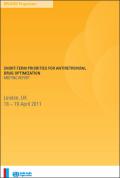
Resource | Publications,
The World Health Organization (WHO), with support from the Pangaea Global AIDS Foundation and funding from the Bill & Melinda Gates Foundation, convened a meeting of experts in HIV treatment from around the world to establish short-term treatment optimization priorities for preferred first- and second-line regimens recommended in 2010 WHO guidelines for adults and paediatrics. The list of attendees is attached at Annex A.
For this meeting, short-term drug optimization was defined as a three-year window (2011-2013), and discussion focused on preferred first- and second-line regimens for adults and paediatrics recommended in the 2010 WHO Guidelines.
The meeting’s objective was to refine the recommendations of the Conference on Anti-Retroviral Drug Optimization (CADO) held in June, 2010, and the recommendations made by the Medicines Patent Pool, UNITAID and WHO, endorsed by a number of global partners working on the Treatment 2.0 initiative, to the WHO Expert Committee on Essential Medicines in March, 2011.
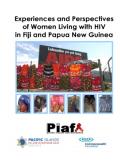
Resource | Publications,
This study focuses on the experiences and perspectives of HIV-positive women living in Fiji and Papua New Guinea. The purpose of the study is to give voice to women living with HIV and to allow their stories and views to inform an improved HIV response where the dignity of each and every woman and man is respected and protected.
By paying attention to the experiences of these Pacific women, whose lives were dramatically changed on the day when they found out that they were HIV-positive, this study expands upon the knowledge and data on HIV in the Pacific Islands region.
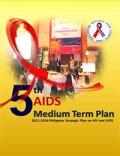
Resource | Publications,
The Philippines has maintained a low prevalence rate in HIV and AIDS. With the current spike in the number of reported cases, however, the country may not be able to keep it at the present level. There is growing evidence that the next Country Response to HIV and AIDS must catch up with, if not overtake, the spread of the epidemic at its present rate.
The 5th AIDS Medium Term Plan (5th AMTP) envisions the halt to the present rate of HIV infection in the Philippines by preventing the further spread of HIV infection and reducing the impact of the disease on individuals, families, communities, and various sectors. It aims to broaden its reach among the general population, especially those most-at-risk and are found to be the present drivers of the epidemic such as Men having Sex with Men (MSM) and People Who Inject Drugs (PWID).
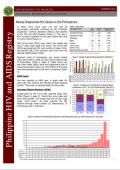
Resource | Fact Sheets,
In March 2011, there were 172 new HIV Ab seropositive individuals confirmed by the STD/AIDS Cooperative Central Laboratory (SACCL) and reported to the HIV and AIDS Registry (Table 1). This was a 43% increase compared to the same period last year (n=120 in 2010) [Figure 1].
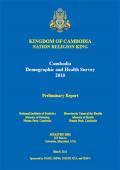
Resource | Publications,
This report presents preliminary findings of the 2010 Cambodia Demographic and Health Survey (CDHS) which was conducted by the National Institute of Statistics of the Ministry of Planning and the Directorate General for Health of the Ministry of Health of Cambodia.
The 2010 CDHS, the third of its kind, follows the surveys that were successfully conducted in 2000 (the 2000 CDHS) and in 2005 (the 2005 CDHS). The 2010 CDHS provides data to monitor the population and health situation in Cambodia. Specifically, the 2010 CDHS collected information on a broad range of demographic, health, and social issues such as household characteristics, utilization of health services, maternal and child health, breastfeeding practices, early childhood mortality, maternal mortality, nutritional status of women and young children, fertility levels, marriage, fertility preferences, awareness and use of family planning methods, sexual activity, and awareness and behavior regarding AIDS and other sexually transmitted infections.
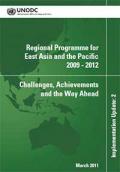
Resource | Publications,
This is the second consolidated report on the achievements of the Regional Programme for East Asia and the Pacific. The focus remains squarely on articulating the contribution to development results, rather than simply providing an account of activities that have been carried out over the preceding 12 months.
East and South-East Asia is one of the most rapidly developing parts of the world. Global experience has shown us that positive and welcome developments, such as increased mobility of goods, services and money as well as the availability of information and communication technologies, simultaneously provide opportunities for transnational organized crime to expand. An uneven distribution of economic opportunities also produces significant domestic and international migration, which often disrupts communities and isolates vulnerable individuals. Rapid urbanization can also generate zones of anonymity and insecurity where criminality emerges and the law is challenged. This in turn adds impetus to both the demand for and supply of illicit drugs, for forced labour, for sex workers, for counterfeit products and for limited or protected natural resources (like timber, fish and wildlife).
For this reason, in addition to accounting for what we have achieved in 2010, we also attempt to outline the new and emerging threats and how we can best respond to them.
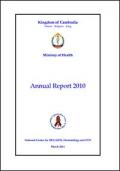
Resource | Publications,
This report describes the achievement of program implementation on HIV/AIDS and STI prevention, care, support and treatment during the year 2010. The report is intended to aggregate data and information collected from all OI/ART, VCCT, Family Health Clinics, HBC, and PMTCT sites from the whole country to be represented as the National Comprehensive Report for the health sector response to HIV/AIDS and STI in Cambodia. The following sections reported the main three program areas implemented for this year that are including: A) General Report related to Programme management and implementation; B) Results from health service deliveries; C) Financial Report for descript the financial disbursements against the yearly budget plan; D) Procurement of OI/ARV Drugs, E) Challenges etc.
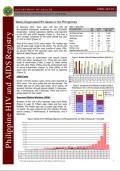
Resource | Fact Sheets,
In February 2011, there were 159 new HIV Ab seropositive individuals confirmed by the STD/AIDS Cooperative Central Laboratory (SACCL) and reported to the HIV and AIDS Registry (Table 1). This was a 22% increase compared to the same period last year (n=130 in 2010) [Figure 1].
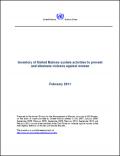
Resource | Tools,
In February 2008, the Secretary-General of the United Nations, Mr. Ban Ki-Moon, launched his Campaign "UNiTE to End Violence against Women", 2008-2015. Through the Campaign, the Secretary-General is spearheading the accelerated efforts of the United Nations system to address violence against women. This inventory gives an overview of past and ongoing activities on violence against women by the entities of the United Nations system, including those which will contribute to the achievement of the five key outcomes of the Secretary-General’s Campaign by 2015. It is compiled by the Division for the Advancement of Women, now part of UN Women, as a contribution to the work of the Task Force on violence against women of the Inter-Agency Network on Women and Gender Equality.
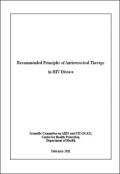
Resource | Publications,
In 2005, the predecessor of this Committee, Scientific Committee on AIDS, published its set of recommended principles of antiretroviral therapy to provide general guidance for the use of antiretrovirals in Hong Kong. The document stated nine major principles of antiretroviral use.
Since then, progress has been made in the realm of HIV management. There have also been corresponding changes in local practice. This Committee therefore undertook to re-examine the document with a view to updates where appropriate. As before, the effort focussed on major principles rather than details of antiretroviral use.





